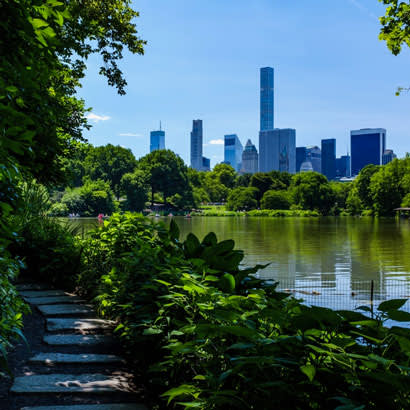
As the needs of nearly 8.6 million NYC residents evolve, parks are transforming the realms of design and functionality to reflect contemporary social, environmental, and infrastructure trends. From tiny green spaces to community gardens to well-known public parks like Central Park, Bryant Park, and Prospect Park, these areas are reshaping the way residents interact with the outdoors. They are also supported by millions of public agency dollars and numerous programs that spearhead issues like aging park infrastructure, a lack of accessibility and inclusiveness, and public health concerns. As such, parks are becoming the new “third places” for neighborhoods throughout the five boroughs.
From Underutilized Space to Third Place
Coined by sociologist Ray Oldenburg, the term “third place” refers to places where people spend time between home (first place) and work or school (second place). Examples include coffee shops, churches, gyms, restaurants, and, increasingly, parks capable of supporting the physical, social, environmental, and economic health needs of city dwellers.
“We are seeing more NYC residents spending time in parks, correlating to the uptick in the renovation and construction of these spaces to enhance park accessibility,” says Gene McGarry, Project Director at Hill International, Inc. McGarry and the Hill team have supported and delivered more than 75 construction and renovation projects totaling more than $500 billion for the New York City Department of Parks and Recreation (NYC Parks) since 2007.
“Small changes in the design and construction of parks can encourage more interaction between groups that might otherwise be cut off from each other,” McGarry continues. “It is exciting to see how these projects provide recreational opportunities and a common setting to exchange ideas, attend events, and enjoy outdoor activities.”
The Park Next Door: Accessibility for All
According to a national study published by The Trust for Public Land, a nonprofit organization that researches park best practices and benefits, 99 percent of New Yorkers live within a 10-minute walk of a public park. These statistics indicate a much higher number than the national average of 54 percent. NYC has more than 2,300 parks and nearly 30,000 acres of open land, equipped with abundant open space in the heart of its diverse communities.
“For many people, Starbucks or the local coffee shop was the ideal third place,” explains McGarry. “Thanks to NYC Parks programs like the Community Parks Initiative, Anchor Parks Initiative, and Parks without Borders, green space is integrating with the city’s infrastructure and many parks are just a few steps away from home, school, or the workplace.”
In addition to the favorable park-resident ratio, mobile phones, free Wi-Fi, and concessions inside parks contribute to this increase in park usage and popularity. Mobile phones offer a wider range of work and leisure capabilities on-the-go, resulting in less laptop usage in the traditional third places like coffee shops. Free Wi-Fi, more libation and food options, and other convenient concessions continue to attract more crowds to parks.
Other programs demonstrate a national focus on increasing park accessibility and further supporting their functionality as a third place. The National Recreation and Park Association, The Trust for Public Land, and Urban Land Institute, are leading a nationwide movement, the 10-Minute Walk campaign, with the ultimate goal ensuring there is a high-quality park within a 10-minute walk of every person in the United States. In addition, the NYC Parks’ Framework for an Equitable Future Program helps to restore and create public spaces by strategically allocating resources, promoting sustainability and resilience, engaging communities and stakeholders, and developing innovative and data-driven approaches to delivering services in parks.
Parks Strengthen Communities
Third places help strike a balance between private home life, the busy schedule of work or school, and the social and leisure needs that are often overlooked. Parks support this balance by unifying its users with walkable, open, and inviting designs, and serving as a platform to support cultural events, recreational activities, and other social gatherings that help strengthen its unique community.
“Parks reflect the people who live, work, and play in the surrounding neighborhood,” notes McGarry. “They inspire a sense of community and are central to a city’s quality of life. This epitomizes the third place.”
Stephanie Cristino is a Senior Writer for Hill International, Inc.

